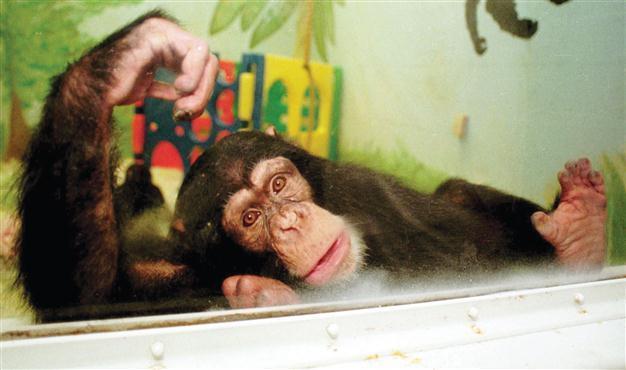US agrees to limit medical research on chimpanzees
CHICAGO - Reuters

This photo shows chimpanzee living at the Ohio State University animal lab. AP photo
The U.S. National Institutes of Health (NIH) will sharply curtail medical research studies using chimpanzees, humans’ closest relative in the animal kingdom, after an expert panel said such studies are rarely warranted.NIH Director Dr. Francis Collins said on Dec. 15 that his agency will adopt new recommendations from the Institute of Medicine (IOM), part of the National Academies of Sciences, that will limit research funded by the agency involving chimpanzees.
“After very serious and careful consideration, I have decided to accept the IOM committee recommendations,” Collins told reporters on a telephone briefing.
He said effective immediately, the NIH will stop accepting any applications for research grants using chimpanzees until the agency can get rules in place that will allow it to adhere to the new guidelines.
The NIH in 2010 asked the IOM to reassess the use of chimpanzees in medical research in light of new technologies that provide for other testing methods.
In its report, the IOM panel of experts said use of chimpanzees in government-funded medical research should be reserved only for studies where no suitable alternative is available or where testing in people would be unethical, and only for life-threatening or debilitating conditions.
“Research use of animals that are so closely related to humans should not proceed unless it offers insights not possible with other animal models and unless it is of sufficient scientific or health value to offset the moral costs,” Jeffrey Kahn of Johns Hopkins Berman Institute of Bioethics in Baltimore, who chaired the committee.
“We found very few cases that satisfy these criteria,” Kahn said in a statement. The European Union banned research on use of all great apes in 2010. The EU ban also includes a provision using these animals in cases where no other suitable alternative could be found.
















